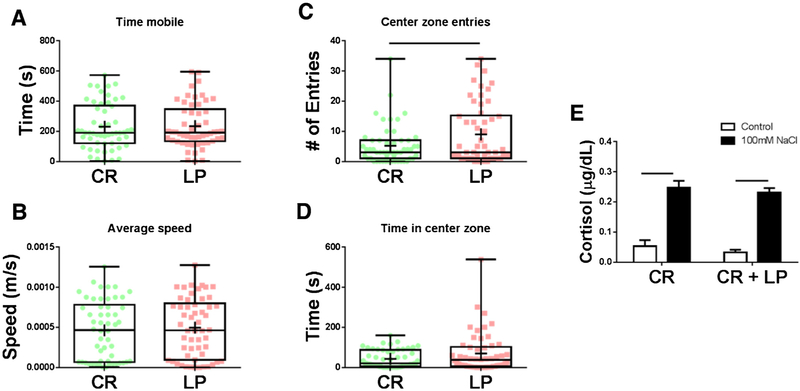Fig. 5.
L. plantarum reduces anxiety-related behavior in 6 dpf zebrafish larvae. (A–D) Treatment with L. plantarum did not alter basic locomotor activity (A,B), however, zebrafish larvae treated with L. plantarum (CR + LP) exhibited significantly less thigmotactic behavior (C,D) than broth-treated controls (CR). (E) L. plantarum treatment did not alter cortisol production following an osmotic stress challenge. Behavior data shown are represented by box and whisker plots showing individual data points, ELISA data are represented by mean ± SEM (n = 54 larvae/group for behavior data and n = 4 replicates with 14 pooled larvae/replicate for ELISA data). Bars denote p values ≤ 0.05 (student’s t-test for behavioral test data, two way ANOVA for ELISA data).

